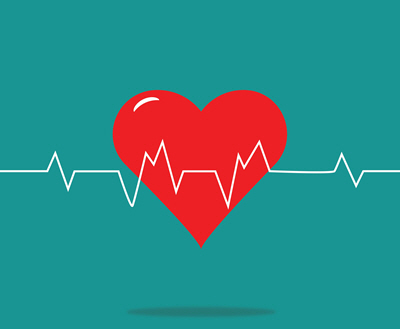What is biofeedback?
It is a mind-body technique that involves using visual or auditory feedback to gain control over involuntary bodily functions.
Through a learned behavior change (rate of breathing), you can gain voluntary control over a host of problems, such as heart rate, muscle tension, blood flow, pain perception, and blood pressure.
At our office, we offer heart rate variability training. With this technique, you can learn to change your heart rhythm to achieve physiological coherence.
Brent’s heart was racing
Social anxiety was a daily problem for Brent. He didn’t want to use medication and instead tried to avoid being around people as much as possible.
Brent decided to try biofeedback and learned that, even though he could breathe at a regular rate when he tried, he wasn’t breathing WELL. The breaths were too shallow and too short.
With the coaching on the biofeedback equipment, he gradually got better at these slower, deeper breaths. The result was he could drop his heart rate by 20-30 beats per minute during a session. Then he got so good at it that he could do the breathing technique when out in public to calm himself.
Brent said, “I had listened to meditation apps, but they didn’t work for me, because I didn’t know I wasn’t breathing correctly. The real-time feedback here was critical.”
 Different strokes for different purposes
Different strokes for different purposes
Heart signals have a significant impact on brain function by influencing emotional processing and higher cognition. A healthy heart rate has variability that might be counter-intuitive, but you don’t want a perfectly regular heart rate.
It needs to be a balance between a slightly faster heart rate on your inhale and a slightly slower heart rate on your exhale. This healthy variability makes you more resilient and flexible to meet changing demands in your life.
Your nervous system has two branches: the sympathetic (fight/flight, faster heart rate) and the parasympathetic (rest/digest, slower heart rate). These need to be in balance, so you’re not operating as though your foot is only on the gas or only on the brake (or worse, on both pedals at once).
 Research-proven evidence
Research-proven evidence
Practicing heart rate variability training with paced breathing reduces psychological stress and depression, and decreases emotional reactivity. It increases vagal nerve regulation, which then reduces risk of heart problems. (Karavidas, M., spring 2008, ‘Heartrate Variability Biofeedback for Major Depression,’ Biofeedback, Vol. 36, Issue 1, pp 18-21)
Heart rate variability training in a group of alcoholics showed reduced craving, reduced anxiety, and improved cardiac and vasomotor function. (Penzlin, et al., 9 October 2015, ‘Heartrate Variability Biofeedback in Patients with Alcohol Dependence: a randomized controlled study’ Neuropsychiatry Disease and Treatment)
Our method of heart rate training
At the beginning of each session, you put on an ear clip to measure heart rate, while watching a computer screen for visual and audio feedback. This shows how your breathing and your heart rate are matching.
Through these 5- to 10-minute exercises, you can learn to bring heart rate and breathing into coherence.
Unlike neurofeedback, which is a type of biofeedback based on your brain’s electricity and is a subconscious learning process, heart rate variability biofeedback is based on your breathing and heart rate and is a conscious learning process.
It’s time to gain control!
Contact us today at (828) 338-3200, so you can consciously find a healthier rhythm.

